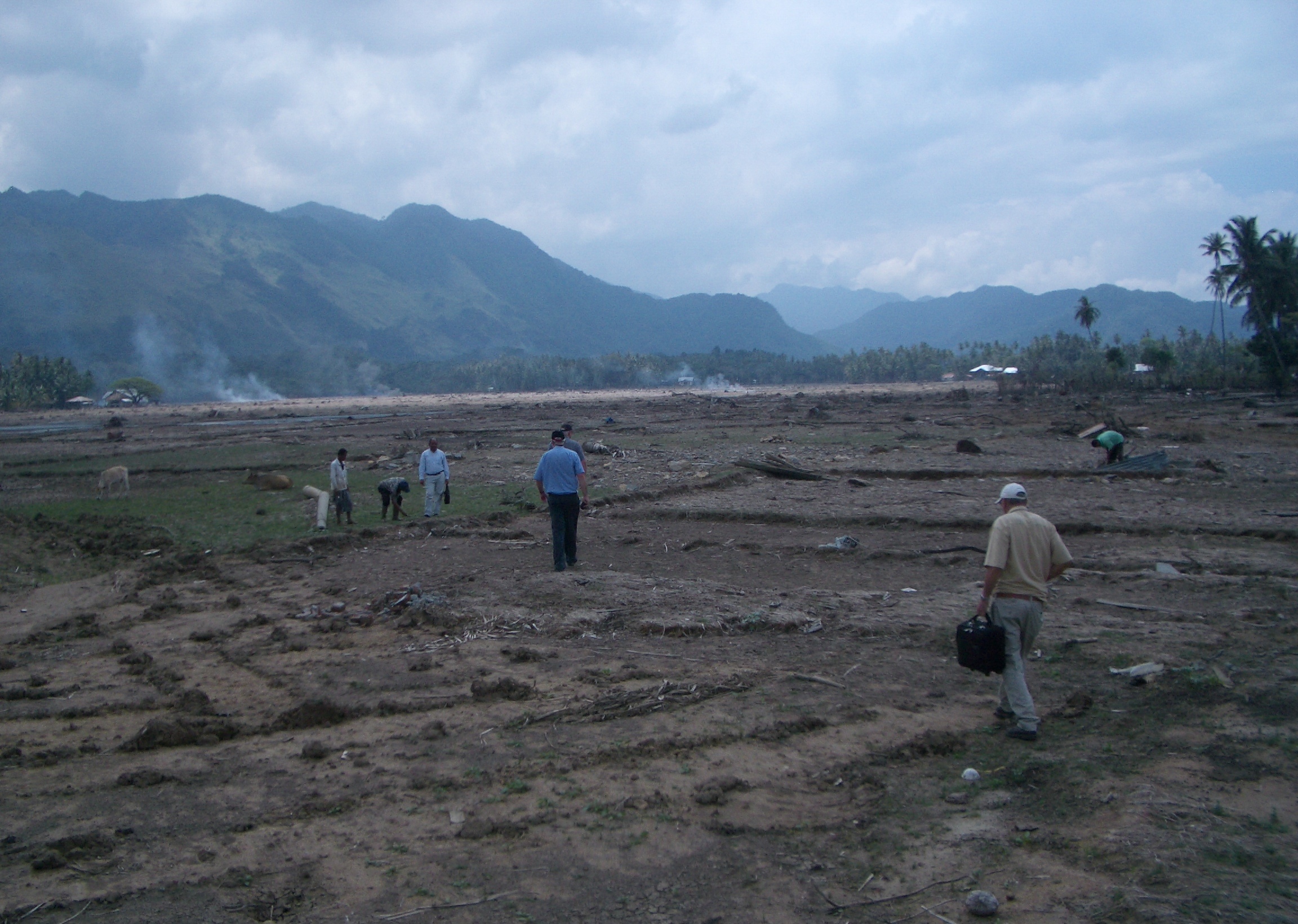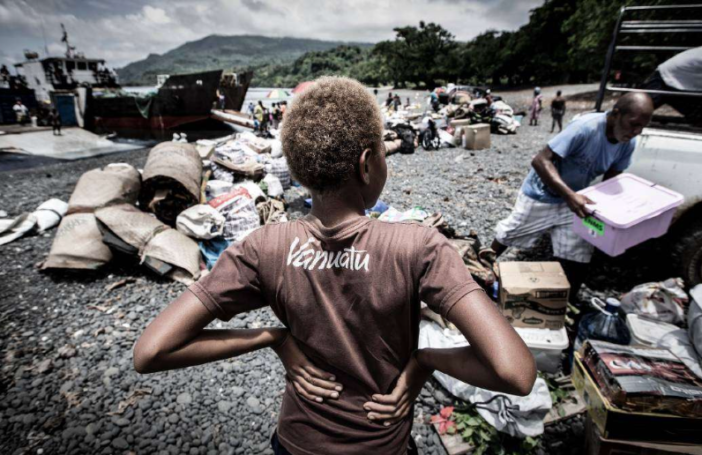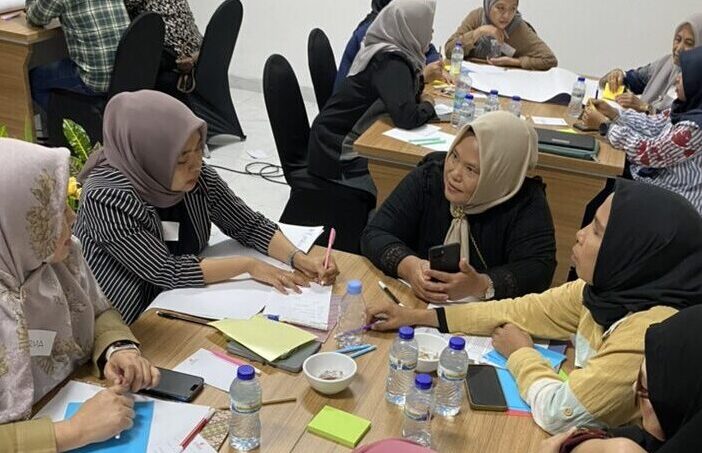The 2004 Indian Ocean tsunami triggered a shift in thinking in disaster management in Indonesia, from reactive response and recovery towards preparedness, mitigation and risk reduction. It was a major turning point for the Government of Indonesia in addressing disaster risk management. Significant investments in technical capacity to develop institutional, policy and regulatory frameworks were made over the past 15 years, including investments in civil society organisation technical capacity.
However, many other institutions, both national and subnational, have disaster management mandates, which has contributed to overlapping roles within the existing complex policy environment. This has led to varying degrees of siloed disaster management system organisation and service delivery across the country. For example, there are more than 12 separate government-led community-based disaster risk management (CBDRM) programs which overlap across villages, resulting in inefficient use of funds and uncoordinated implementation. In addition, the absence of technical guidelines to support implementation of regulations has prolonged inconsistent interpretation and technical challenges at the implementation level.
In light of these systemic challenges, the Australia-Indonesia Partnership in Disaster Risk Management (AIP-DRM, also known as SIAP SIAGA) designed a theory of change grounded in systems thinking. The assumption is that understanding bottlenecks, improving policy and regulatory coherence, and clarifying the roles and responsibilities of disaster management actors (both government and non-government) and how they coordinate (horizontal and vertical) will, over time, improve sectoral planning and budgeting and lead to more consistent, effective and inclusive implementation of disaster management services.
In 2020, SIAP SIAGA implemented a political economy analysis, followed by 11 in-depth studies, to understand the challenges to system effectiveness related to policy coherence, and clarity of roles and coordination mechanisms. Thematic analysis of the study results identified seven ‘leverage points’ or ‘change spaces’ where the program felt sustainable improvements to the system could be made. Program activities in 2021-22 have been driven by an approach that prioritises facilitation rather than direct capacity support, and relies on routine reflection and learning with partners to ensure that the program is following emerging change pathways rather than preset targets.
In order to facilitate systems change, SIAP SIAGA adopted an adaptive management approach, which has been essential to adjust to emerging bottlenecks that result as initial bottlenecks are resolved. The program’s theory of change underpins all strategic decision making – activities are planned annually, determined based on potential to contribute to the changes the program wants to see.
This process has required substantial patience – both to build trust with stakeholders, and to adjust mindsets internally as a team, moving from a target-oriented to a problem-driven approach. This has also required doing away with the terms ‘monitoring’ and ‘reporting’, and instead focusing on the concept of collaborative evaluation, using a quarterly reflection process – an experimental tool combining a most-significant-change approach and longitudinal study. All reflection focuses on progress towards outcomes, rather than results at output level.
SIAP SIAGA has also put significant emphasis on the use of real-time evaluation and learning, and routine partner reflection workshops. These processes support continual communication between partners, particularly as they build trust around the use of common language and issues; and place partners at the centre of the program’s decision making, as they are the users of the system that is being improved.
Some examples of key changes evidenced to date include:
- Clarity of roles and responsibilities – for example, agreement between the Ministry of Home Affairs and the National Disaster Management Agency on mandates related to administrative oversight of disaster management (MoHA) and technical guidance (NDMA), which has created clarity for subnational governments on which national institution to direct questions to.
- Policy coherence – dialogue between national and subnational authorities to clarify policy requirements for post-disaster rehabilitation and reconstruction has helped to identify regulatory gaps and recommendations, with the revision of the national policy on subnational budgeting processes currently awaiting ministerial approval.
- Coordination – an inter-ministerial coordination group at the national level has improved policy-level coordination for CBDRM programming and resources across four key ministries. This is supported by a CBDRM dashboard and a catalogue platform of preparedness programs, to reduce duplication and promote effectiveness of programming at the village level.
Why is a systems change approach working for SIAP SIAGA? We see two main reasons.
The approach convenes diverse actors at all levels, to create a common language on key issues. This facilitates system alignment and determines the extent to which differences in priorities can be accommodated, and helps understand how the various parts of the system work together (and at times against each other). It facilitates partners to seek solutions that work for them, based on the common objective they have agreed to work towards.
The approach recognises the complexity of the disaster management system and existing capacities (policies, regulations, institutions and people) – assessing the system as a whole rather than specific parts. It highlights the need to focus on policy coherence and coordination across the sector – rather than just within institutions – as the next step in Indonesia’s disaster management journey. Disaster management is as much about public policy as it is about technical expertise, meaning systems thinking is essential if development outcomes are to be achieved, particularly as the disaster management sector grows more complex over time.
A systems approach is a valuable model for middle-income countries like Indonesia, where significant resources are already invested, and capacity is in place. Systems change approaches, supplemented by adaptive management practices, create space to accommodate the increasing complexity of disaster management – and broader public policy initiatives, including climate change, public health and social stability.




